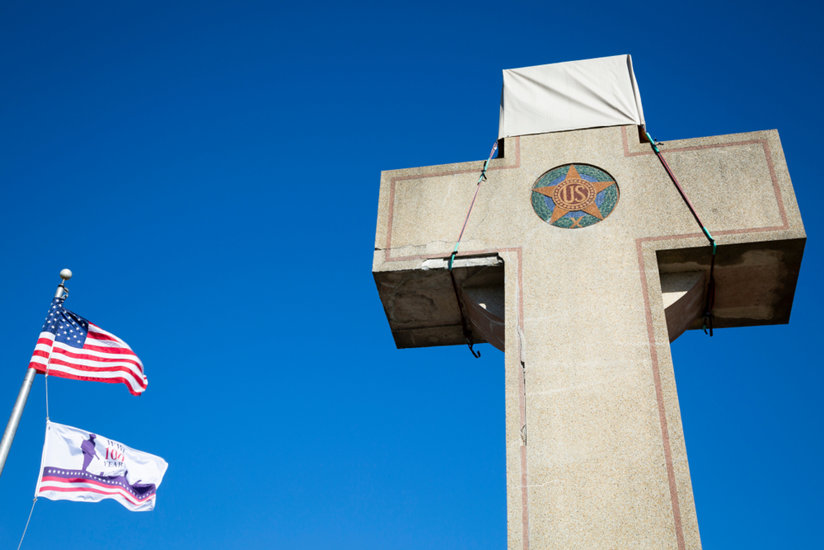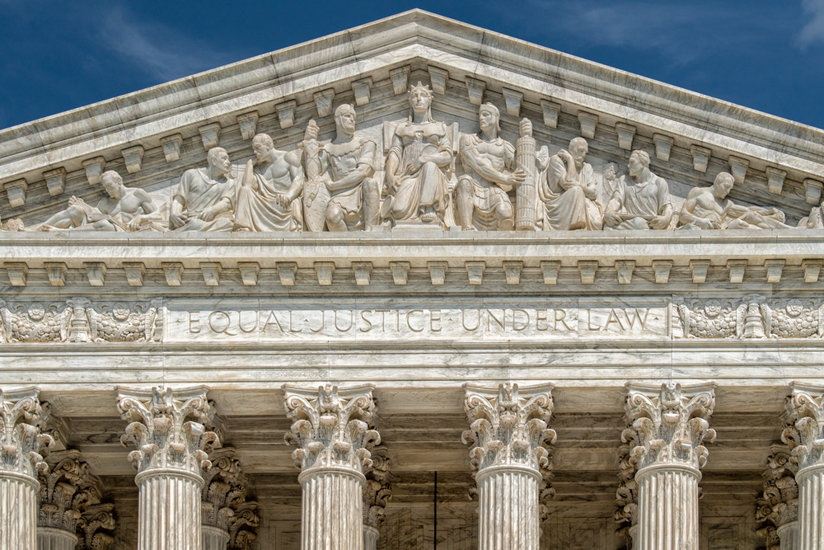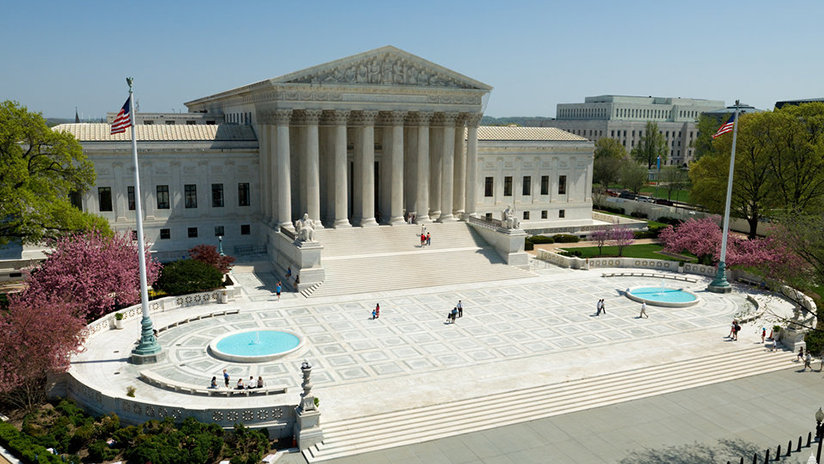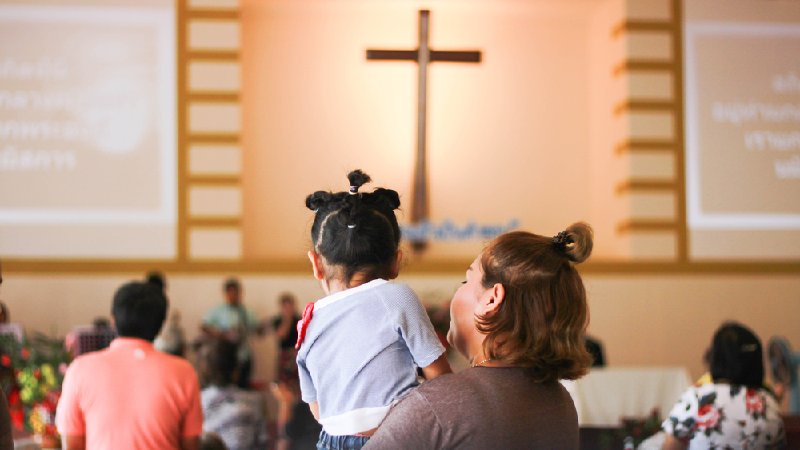Supreme Court Allows Cross to Remain: Did It Establish Religion?
The United States Supreme Court recently ruled that a 40-foot-high cross honoring residents of the Maryland town of Bladensburg killed in World War I will be allowed to remain on the public land on which it has stood for almost one hundred years. The Court decided by a vote of 7-2 in favor of the American Legion, which originally built the cross and claimed that it symbolized and memorialized the valor of those who died for their country.
The Legion was opposed by the American Humanist Association, a group which maintained that allowing the cross to stand at a state-owned public intersection is an unconstitutional establishment of religion, i.e. government support and endorsement of Christianity, and a violation of the First Amendment to the Constitution, which forbids such.

Despite the 7-2 vote, the Court’s majority, while agreeing on the result, split among multiple different opinions as to why the cross should prevail. The most common rationale was that the historical nature of the cross and the fact that it has been there for many years made it unclear that it was put there and maintained for a religious purpose.
While the Humanists were the leading party supporting removal, it was not simply a battle between non-religious or non-Christian groups on one side and Christians trying to defend the presence of the cross on the other. For example, an Islamic and Jewish group each filed a “friends of the court” brief defending the presence of the cross, claiming that removing it from public view would limit open religious expression which would be harmful to their religions and other religious minorities.
Like so many debates throughout American history attempting to set the limits of what constitutes government establishment of religion, the controversy over the Bladensburg cross was complicated.
On the other hand, the Baptist Joint Committee, supported by several Jewish and Christian associations, filed its own brief claiming that the cross is a sacred Christian symbol which should be kept separate from government, stating in a press release that “we do not need the government to promote our faith nor do we want the government to distort it.” They took special exception to claims that the cross is a generic symbol of valor rather than one of Christ’s death and resurrection. Over 20 briefs were filed giving particular reasons for taking one side or the other.
In short, like so many debates throughout American history attempting to set the limits of what constitutes government establishment of religion, the controversy over the Bladensburg cross was complicated.
To further confuse the picture, it’s evident from reviewing the transcript of the oral argument that there is considerable disagreement on how to define “establishment of religion,” despite the fact that the phrase has been part of the Constitution for over two centuries. There have been other “cross cases” to come before the Court over the years, however, as the most recent case has shown, there isn’t any clear agreement as to when a cross can or can’t be displayed on public land. There is at least one more “cross case” working its way through the legal system—this one involving a cross in a public park in Pensacola, Florida—so the controversy shows no sign of coming to an end.
Interestingly, briefs presented both for and against maintaining the cross claimed that it is beyond doubt that the Founders would have supported the position espoused therein. Yet the Founders themselves were unable to agree on whether it was appropriate for the federal government to sponsor days of Thanksgiving or deliver the mail on Sundays. At this link, you can read much of the record of debate by the House of Representatives on the wording of the religion clauses of the First Amendment (Senate deliberations at that time were confidential so the House version is all we have. Go to August 15, page 757-759.) Maybe you can figure out from reading it what the original Congress that created the Bill of Rights would have thought about the Bladensburg cross. I certainly can’t.
So why has our inexact system succeeded despite its apparent inability to define its own terms? And why have groups that stood up for their rights been able to prevail and even thrive?
At this point, it would be very easy to throw up our hands in exasperation at how poorly we have defined one of our most fundamental rights. But we should actually feel hope rather than despair, and here’s why: in spite of the often-contradictory efforts to define the boundaries of the relationship between religion and government, and in spite of the lack of an agreed-upon standard on this point, the American promise of religious freedom—which is based on having no official doctrine enforced and so depends on this separation—has protected an ever-growing number of religions, philosophies and belief systems encompassing a far broader spectrum of diverse views than would have even been imaginable in 1789. Decisions by the Supreme Court and lower courts over the years have protected the rights of many different groups to openly act on their beliefs, while at the same time preventing certain practices from being enforced on those who would disagree. Thus, while the conflicting arguments and varying standards can be dizzying, the long-term result has been a higher level of freedom for far more individuals and groups.
So why has our inexact system succeeded despite its apparent inability to define its own terms? And why have groups that stood up for their rights been able to prevail and even thrive? I can suggest one simple reason: Since colonial times the United States has been home to an ever-growing number of religions as well as a wide variety of secular ways of looking at the world. While it is true that many of them have been attacked and persecuted, the diverse number of beliefs and creeds has made enough people aware of the fact that tolerance works and that having a wide variety of groups openly expressing their ideas is beneficial to society rather than something to be feared. Further, while we may not agree upon exactly what is meant by an “establishment of religion,” historical evidence, as well as many present examples around the world, demonstrate that when a government favors one form of orthodoxy—be it religious or irreligious (as in Communist nations)—the result is suppression of free thought and expression.

That being said, it also has to be acknowledged that, in this particular case, as in many other religion cases that have reached the Supreme Court, one side won and the other lost. Because there is really no clear-cut legal basis to decide the question one way or the other, we can expect other cases involving religious symbols on public land to make regular appearances in the court system which will leave the losers embittered and the winners looking over their shoulders out of concern that the next case might go the other way. Further, local communities will be bound by the dictates of the nation’s highest court without having the flexibility to work out solutions for themselves.
Could we make this better? I think so. But I believe it has more to do with our evolving a higher standard of tolerance and trust toward each other rather than trying to fine-tune the legal definition of religious establishment. For example, during the oral argument, the attorney for the Humanists mentioned that she had received death threats and that other Humanists had also been threatened (see page 63). For their part, members of groups such as the Freedom From Religion Foundation have accused supported of the cross of dishonoring non-Christians despite no actual evidence that such an intent exists. A tolerant majority that does not originate or forward bias or hatred could defuse many of these situations.
There are many circumstances where establishing human rights requires firmly saying no to an oppressor. But there are also many times where intelligent compromises will result in the most freedom for the most people. A society that is willing to listen and communicate respectfully while ignoring bigotry has the best chance of recognizing which is which.










